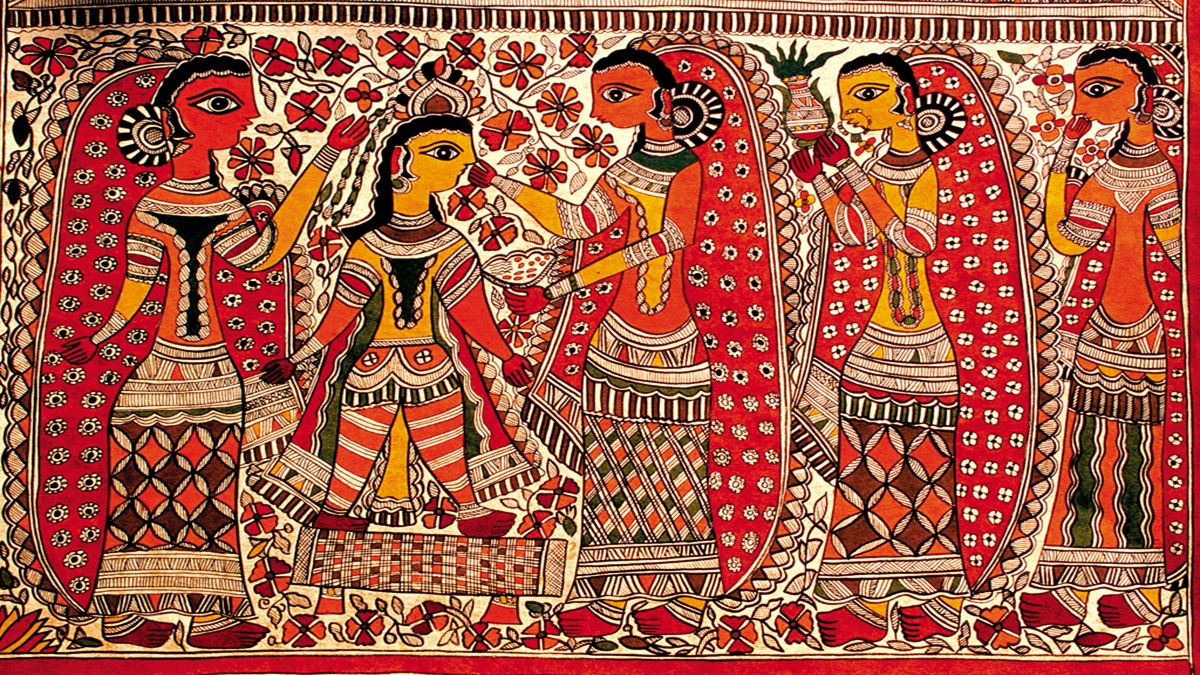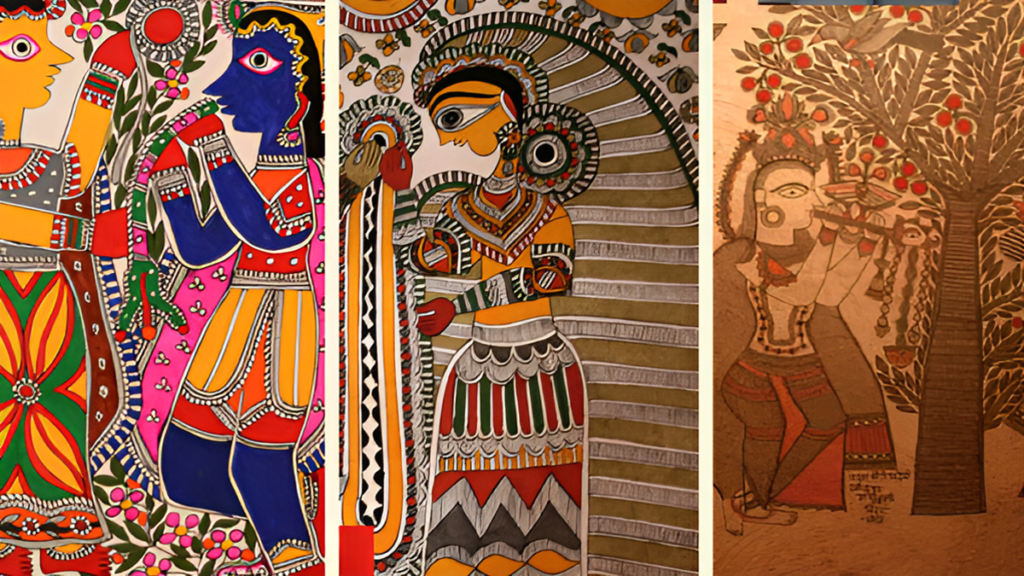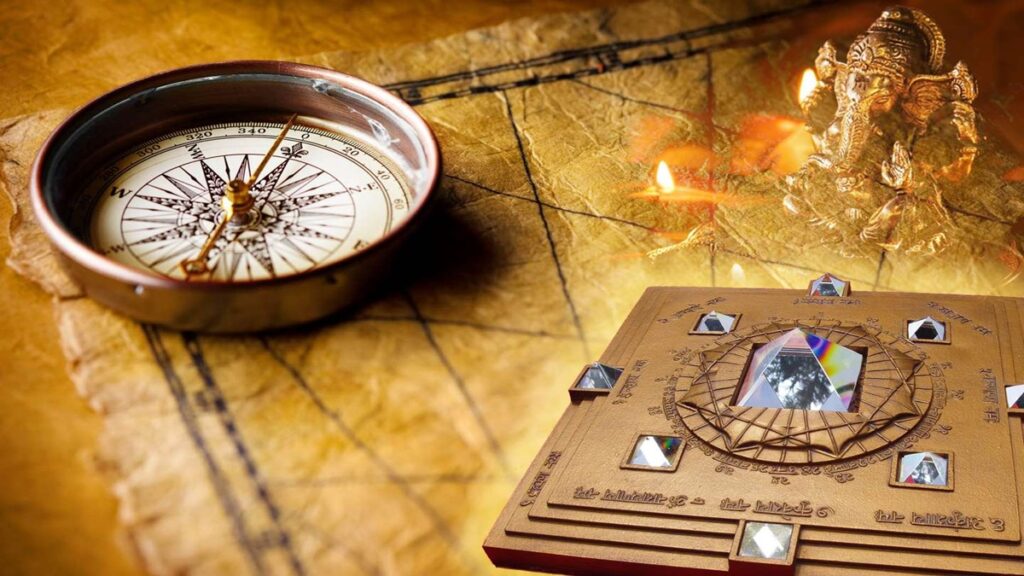India has diverse cultures, traditions, and art forms. One of its many artistic treasures, Madhubani paintings, is one of the most brilliant and preserved forms of art. Often referred to as Mithila painting, this traditional Indian art has evolved as far back as 2500 years. Intricate patterns, bold color, and deep-rooted symbolism set forth a unique yet timeless creation of Madhubani painters. It is especially famous in Bihar because it reflects the region’s cultural identity, religious beliefs, and rituals, often portraying deities, festivals, and local folklore with remarkable authenticity. While once exclusive to Madhubani wall paintings, it is now sought for paintings on canvas and fabric as well as art galleries in different countries. The art captivates viewers with a narration that flows between mythology, folklore, and nature itself. The somewhat beautiful Madhubani painting still attracts art lovers from all over the world, thus keeping this ancient tradition alive and flourishing.
The Origins and History of Madhubani Painting
Madhubani painting-dating back to the times of yore-have roots in the Mithila region of the state of Bihar in India. According to legend, this art had begun when King Janaka commissioned a group of artists to create elaborate wall paintings (madhubani wall painting) for the wedding of his daughter Sita to Lord Rama. Passing through generations, it is mainly women who have held the sacred mantles for this elaborate art.
For centuries, Madhubani painting was a domestic art, used to decor mud walls of homes with icons of Hindu deities, celestial bodies, and natural elements. The Madhubani art also narrated stories of the epics-Ramayana and Mahabharata. For centuries, in this way, it remained unknown outside of Mithila until the 20th century-when it started to achieve national and international recognition.
Styles and Techniques of Madhubani Art
Madhubani paintings are painted in various styles and techniques. Each one has its representative characteristics. The five Principal styles of Madhubani performing include:
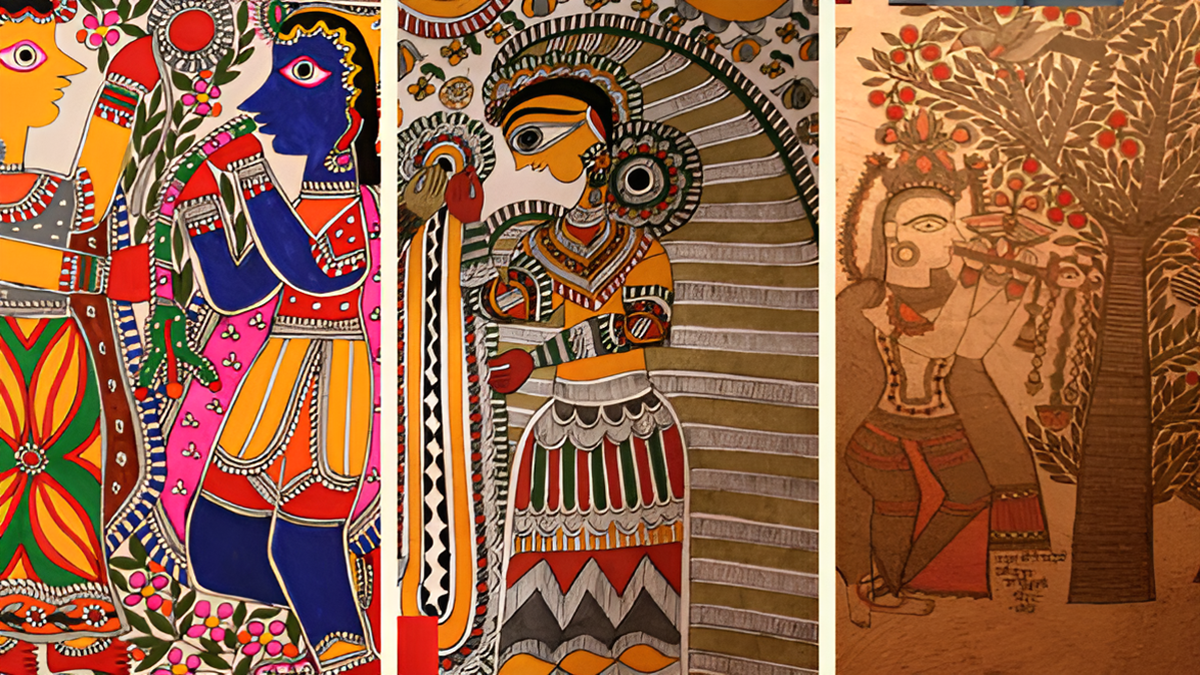
- Bharni Style – Made up with colors to appear lively with much detail, Bharni style consists of portraying various subjects mainly consisting of gods, goddesses, and mythological issues.
- Kachni Style – The lines are thin, and delicate patterns are used with often monochrome and limited colors.
- Tantrik Style – Influenced by spirituality and for purposes of religious vocabulary, the Tantric style also contained represented representations of mysticism itself; yantras, mantras, associated cosmic symbols, much more to the point.
- Godna Style – Relying on tribal tattoo patterns, Godna style showcases patterns that recur in a simple way.
- Kohbar Style – Traditionally used during marriage ceremonies, the Kohbar style is enriched with fertility symbols, auspicious motifs, and depictions of love and prosperity.
Madhubani Art are characterized by the varied bright colors used in them; the artist uses natural dyes and pigments extracted from plants, flowers, and minerals. Traditionally, colors were dabbed on with twigs, matchsticks, or fingers instead of the conventional paintbrush. The Mithila paintings often have bold black borders defined along their lines, creating a startling contrast that enhances their beauty.
Themes and Symbolism in Madhubani Painting
With their symbolism, Madhubani paintings are the most extensive collection of art predominantly used throughout India. While the mean of each madhubani painting designs and depiction varies greatly, some of the most common themes and symbols can be found in them:
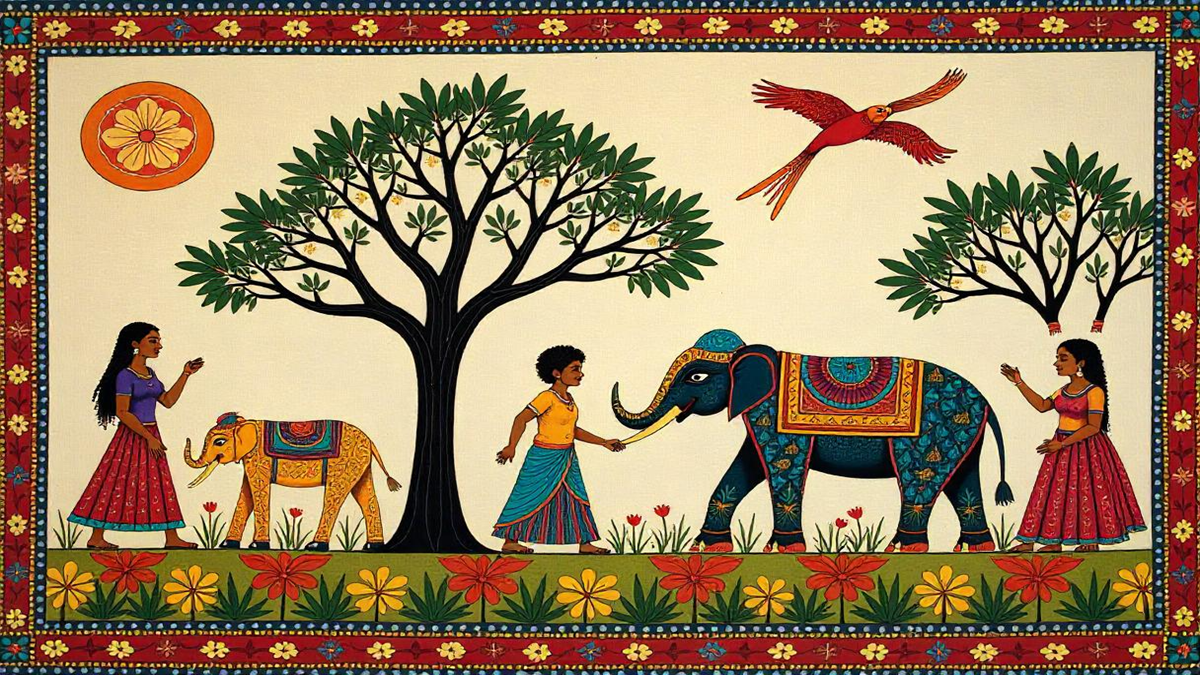
- Hindu Deities – Showing a divine presence and protection, most often are lord Krishna, Goddess Durga, and lord Shiva.
- Nature and Animals – Trees, birds, fish, and elephants are some common motifs that are symbolic of the harmony between humanity and nature and prosperity;
- Love and Marriage – Marriage murals illustrate, among other scenes, the divine love of Radha-Krishna, the marriage ceremony, and conjugal harmony
- Celestial Elements – The sun, moon, and stars play a symbolic role in representing cosmic energy and eternal existence.
The Evolution of Madhubani Art in Modern Times
Madhubani painting was originally a domestic, ritualistic type of art. It has vastly progressed over the period. Began during the 1960s, following a severe drought in Bihar, state and cultural organizations have persuaded women to transfer their art onto paper for commercial sale. The result was the legitimizing of Madhubani painting as a true form of folk art, backed in financial ways.
Madhubani artists have today adapted to modern media such as canvas, fabric, and ceramics, and also exploit digital platforms. Fashion designers incorporate Madhubani motifs in their clothing and accessories, and home décor manufacturers present Madhubani-inspired furniture and wall hangings. The international popularity of this art has made for exhibitions across some of the most monumental galleries of the world and cemented its position as an honored cultural heritage.
Prominent Madhubani Artists and Their Contributions
Madhubani painters have gained acknowledgment both nationally and internationally for their contribution towards this art form. Some of the prominent ones include:
- Sita Devi – One of the founding figures in bringing Madhubani to the world stage, she was awarded the Padma Shri.
- Ganga Devi – Well-versed in mythological tales depicted in intricate detail able to carry the tradition beyond Bihar.
- Bauwa Devi – She is a noted artist and winner of many awards for diverse creations and intricate forms.
All of these artists, alongside others, have played a pivotal role in preserving and showcasing Madhubani so that future generations of imitators would appreciate this form of culture.
Why Madhubani Painting Remains Relevant Today
The art of Madhubani might be quite ancient, but in the contemporary world, they have remained alive due to their flexibility and beautiful representation. it remains beloved because of the following:
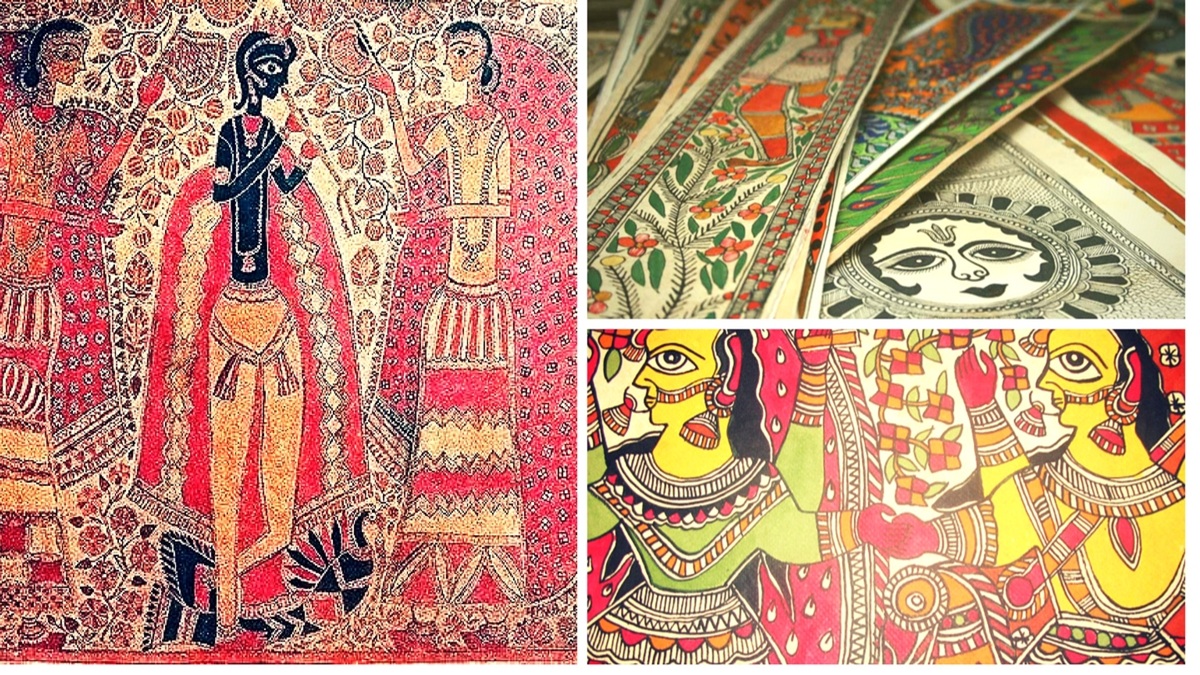
- Sustainability – The use of natural colors and eco-friendly materials is congruent with recent sensitivity to environmental issues.
- Cultural Revival – With growing consciousness of Indian heritage, Madhubani painting stands as a symbol of pride of cultural significance.
- Global Appeal – The intricate designs and vivid aesthetics delight art fans across cultures.
- Economic Empowerment – Madhubani art helped empower women by offering work to many rural women, which created income and, through this, gave them power.
In conclusion
Madhubani painting is not merely an art form; it is a living tradition that links generations together, allowing the cultural identity of Mithila to endure. Born as Madhubani wall painting to emerge into an art that is now globally celebrated, this delicate craft continues to thrive. Be it as wall decor in homes or on fashion runways, beautiful Madhubani painting testify to India’s rich artistic heritage. In this atmospheric journey through the ancient tradition, we must salute and support the artisans who are carrying this 2500-year-old legacy through thick and thin.

